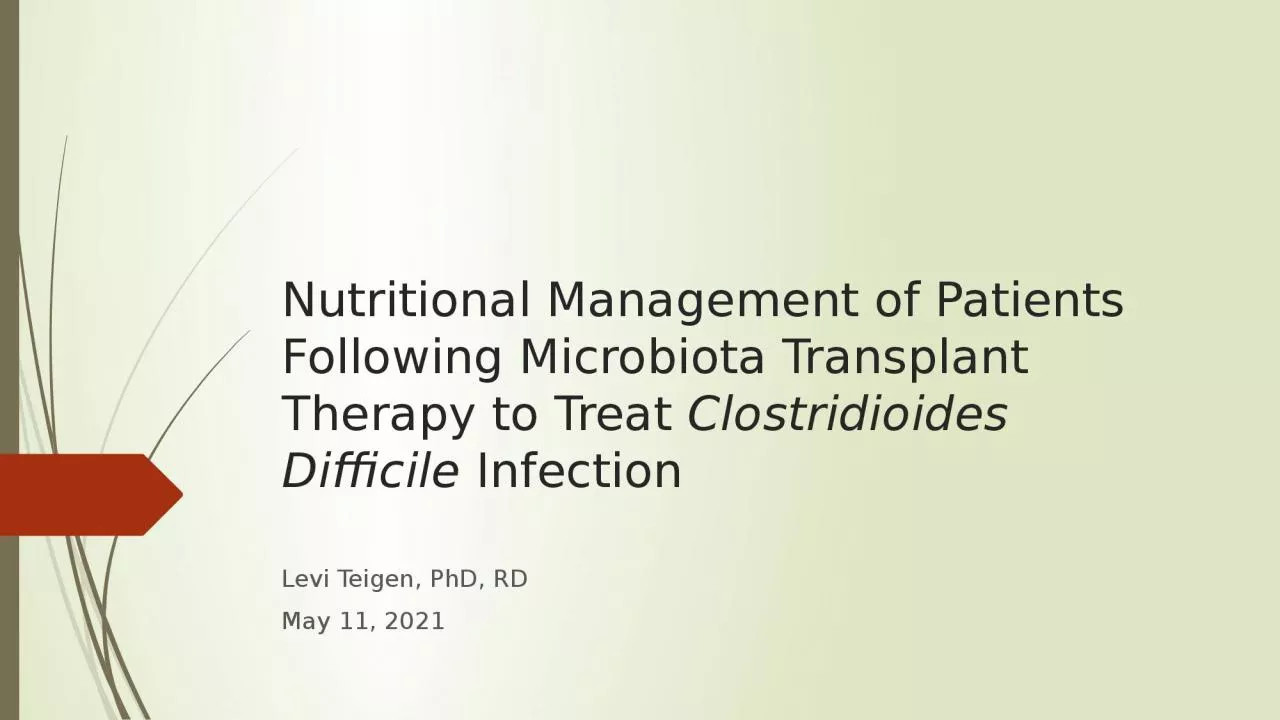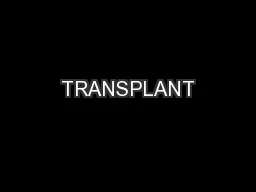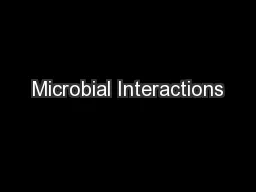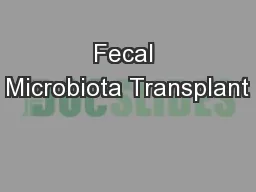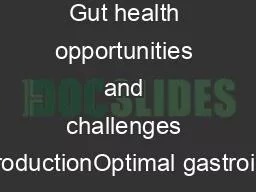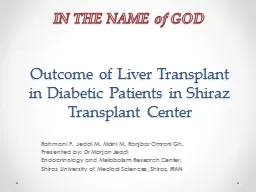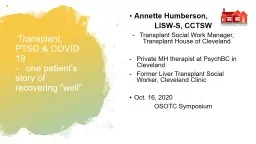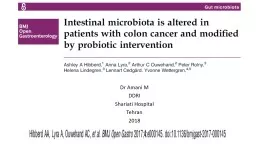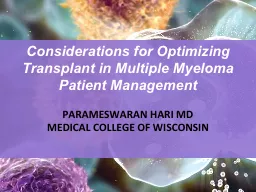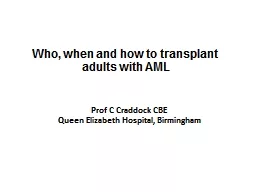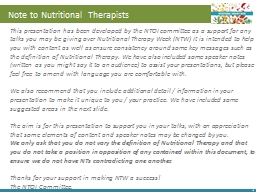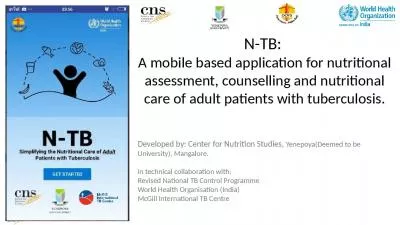PPT-Nutritional Management of Patients Following Microbiota Transplant Therapy to Treat
Author : jasmine | Published Date : 2024-02-02
Clostridioides Difficile Infection Levi Teigen PhD RD May 11 2021 Objectives Recognize the nutritional implications of a C difficile infection at both a systemic
Presentation Embed Code
Download Presentation
Download Presentation The PPT/PDF document "Nutritional Management of Patients Follo..." is the property of its rightful owner. Permission is granted to download and print the materials on this website for personal, non-commercial use only, and to display it on your personal computer provided you do not modify the materials and that you retain all copyright notices contained in the materials. By downloading content from our website, you accept the terms of this agreement.
Nutritional Management of Patients Following Microbiota Transplant Therapy to Treat: Transcript
Download Rules Of Document
"Nutritional Management of Patients Following Microbiota Transplant Therapy to Treat"The content belongs to its owner. You may download and print it for personal use, without modification, and keep all copyright notices. By downloading, you agree to these terms.
Related Documents

